– Narrator: This week on Wisconsin Foodie:
– Almost everybody who knows ginseng knows Wisconsin ginseng is the best. That’s in China, that’s in Taiwan, that’s in Hong Kong, or Singapore.
[laughs]
– Will: These products have been used together in China, for, you know, hundreds, if not thousands of years. American ginseng, only within the last 300 years, but Asian ginseng has been used in China as both food and medicine.
– This is like a shady–
– Welcome to the farm.
– Shady Tuscany of ginseng! Like, it’s not what I imagined it would look like. Look at that!
– So that’s what you’re going after.
– That’s the size of a decent carrot. That is amazing.
– And it only took five years to get that big.
– Well, here we are, Kyle. City Grill for ginseng dinner.
– Kyle: Right on. Wow, this is beautiful–
– This is a really nice plate.
– Bon appetite, my friend.
– Yes.
– Here’s to roots that come out of the ground.
– Here’s to your health.
– Here’s to Wisconsin ginseng.
[upbeat music]
– Narrator: Wisconsin Foodie would like to thank the following underwriters for their support.
The Dairy Farmers of Wisconsin are proud to underwrite Wisconsin Foodie and remind you that in Wisconsin we dream in cheese.
[crowd cheering]
Just look for our badge. It’s on everything we make.
Employee-owned New Glarus Brewing Company has been brewing and bottling beer for their friends only in Wisconsin since 1993. Just a short drive from Madison, come visit Swissconsin, and see where your beer is made.
Milwaukee’s landmark art deco hotel offers luxury accommodations, legendary hospitality, and world-class dining. Paired with the hotels roaring ’20s vibe makes The Ambassador a must-experience destination.
From production to processing, right down to our plates, there are over 15,000 employers in Wisconsin with career opportunities to fulfill your dreams and feed the world. Hungry for more? Shape your career with these companies and others at FabWisconsin dot com. Society Insurance. Small details. Big difference.
Edible Milwaukee magazine.
Also, with support of the Friends of Wisconsin Public Television.
[light jazz music]
[car passes]
[chickens cackling]
[drink filling]
[chopping vegetables]
[fruit popping]
[meat sizzling]
[light jazz music]
[upbeat jazz music]
[light upbeat music]
– Almost everybody who knows ginseng knows Wisconsin ginseng’s the best. That’s in China. That’s in Taiwan. That’s in Hong Kong or Singapore.
[laughs]
And also because of you.
My mom has 14 children. I was the 10th one.
Her health was very poor, so I thought, “Hey, “maybe I can get some pound of ginseng to my mom and to help her.” So, I came up here to central Wisconsin, Wausau area, and send two, three pounds of roots home for my mom. A year later, my father wrote me said, “You don’t believe this, but your mom “took those two, three pounds of ginseng you send home for one year.” One year later, you know, her digestion problems gone. Diabetic problems reduced and arthritis also reduced. Could walk very normally now and used to not able to eat one bowl of rice. Can eat two, three bowls now. So, that made a believer out of me as far as how powerful ginseng could be for your health.
[guitar music]
1976, I moved from Fond du Lac to Wausau and bought a farm and all of that. I seeded and do it all things, on myself, but a lot of things I couldn’t do myself. I started hiring the Hmong worker. So, they help me with weeding and the Hmong kept coming for about 10, 15 years. A lot of Hmong came to Wausau area. I would say between 5,000 to 6.000 people. Wausau probably the third largest Hmong settlement in the United States. Out of 150,000, there’s at least 5,000… 6,000 over here. Without the Hmong people, we will not have the expansion of the ginseng industry.
[light guitar music]
– We were a peaceful people until the war broke out and the CIA recruited us to help fight against the communist in Southeast Asia.
So, I was born in a refugee camp in Thailand. And then we moved to the United States when I was 5-years-old. We moved to Wausau here, when I was 6th grade and started farming ginseng since then. Majority of the people you see out here are the older generation, 50s and up. Where they have a language barrier. They can’t get jobs at factories or other places and this is the only thing that they can do. And plus, Hmong people have been farming for generations, even before ginseng.
[speaking Hmong]
[woman speaking Hmong]
– 95% all the cultivated ginseng grown in the United States comes from this area. American ginseng grown in other area still not as good as grown from central Wisconsin. Because central Wisconsin is blessed with old soil in glacier times and also the weather.
And that makes Wisconsin ginseng special.
[upbeat music]
– Kyle: I have met folks at combines and corn fields and walk-in coolers, but never at an art gallery or more specifically, The Center for Visual Arts here in Wausau, Wisconsin. But I’m here to meet Will Hsu of Hsu Ginseng and find out a little bit about this incredible crop that’s grown specifically and terrifically here in Marathon County.
Will Hsu.
– Hey, how are you? Good to meet you.
– Good to meet you, yeah. This is a rare and first. I’ve never met anyone for this show in an art gallery and you’re staring at this gorgeous sculptural, what I’m going to assume is the ginseng root.
– Yeah, it’s a wild ginseng plant. And this one’s 50-years-old, probably about 8 generations.
– So, just as I’m coming into my full maturity and beauty right now, this root has and it’s on the wall at an art museum. Why still are we… Why am I meeting somebody here who’s–
– Well so, in Chinese practice, a lot of times, you will see a lot of the wild ginseng roots, especially those from Asia and the Asian ginseng species, framed against a red matte background.
– Yeah, and they’re all around everywhere–
– Yeah, we’ve got eight or nine pieces here, and then you’ll also see some watercolors, which is a more traditional Chinese painting style. These products have been used together, in China, for hundreds, if not thousands of years. American ginseng only within the last 300 years, but Asian ginseng has been used in China, as both food and medicine, for probably over a thousand years. This is the epicenter of ginseng. It’s the heart of ginseng country and the reason why is ginseng was first cultivated here over a 100 years ago by the Fromm brothers.
– Right, Fromm brothers.
– And they established the industry here and the industry has been here ever since. So, when you’re talking about individual roots that could be worth, you know, $20, $30, $50, even upwards of $100 each. You kind of have to take a step back and say “Why is someone paying for this food item?” or, Why is someone willing to pay for this? and it’s because it’s also medicine. You have to take it, you consume it every day. You take it as part of our culture and tradition. It’s like a multivitamin.
– Yeah, okay.
– I would look it as a multivitamin.
– Okay, so that’s how they see it.
– They would take a cup of tea every day, in the morning. You know, I think it’s no different than we consume maybe even coffee.
– So, from here we go from gorgeous art gallery, downtown Wausau to get our hands dirty–
– On the farm.
– Somewhere on the farm. Love it. This will not be the first time I’ve been taken to the farm, where Will and Kyle have to sing for their supper and actually harvest–
– Yeah, we’ll have to dig some ourselves.
– I love it.
– And then, there’s a dinner tonight featuring fresh, harvested ginseng that we’re going to go out and harvest. And then, that’s kind of the idea behind, you know kind of previewing some of the culinary ways that you can use this product. But in American culture, we aren’t used to cooking with ginseng.
– Right.
– I think it’s probably very comparable to how we weren’t used to cooking with fresh garlic probably 20 or 30 years ago.
– Okay, I was thinking like ginger, but more like… I get it. So, fresh garlic and those types of, yeah.
– We want to try to showcase it and feature it, so we’re really trying to make it approachable.
– I’m just, the rest of the day, I’m going to roll… I’m with this guy. That’s my move.
– Alright, let’s go.
[laughs]
[banjo music]
– Will, this is like a shady–
– Welcome to the farm.
– Shady Tuscany of ginseng. It’s not what I imagined it would look like.
– This is a black or artificial shade cloth that we use. It’s about 80% shade roughly.
– And ginseng likes that.
– And ginseng needs the shade because it needs to simulate the kind of wood setting.
– The temp change when you get underneath this shade is pretty significant.
– Yeah, it can be. I mean, it depends on the wind and the weather conditions. Sometimes it’s cooler, sometimes it’s warmer. More often it’s warmer.
So, these are the seeds. They’re ready for and ripe for picking. You can tell based on the color. Now, the thing with seeds is that these have to be stratified for a year. So, we will pick the seeds this year. We’ll plant them next summer, typically July, August, and then, they won’t actually germinate and send up their first leaves until the spring of the following year. So, if you think about that sequence, seeds you pick in 2018, you plant in 2019.
– You don’t even see evidence until 2020–
– And you wouldn’t see anything come out of the ground until 2020.
– You are a patient man, Will Hsu.
– That’s why we always say you got to be a little bit crazy to grow ginseng.
– Well, alright, so let’s dig one up.
– Should we dig some roots up? This one’s actually beautiful. This is very rare cause you got a five-prong plant like this.
– What does that tell you?
– Because it tells you that the roots at least five years old.
– Oh, cool.
How long have you been doing this? How young were you when you started–
– I grew up working in the field, so all the things we were talking about picking seeds and pulling weeds and all that stuff when my parents didn’t have the labor, I was the labor.
– Oh, look at that.
– So, if you were digging this one in the wild, you’d be down on your hands and knees, and kind of going, you know, feeling around. Just look at the girth of that one and you can just tell how much bigger that one is.
– And you don’t want to miss out on any of these little wispy parts of the root, right.
– Nope, so I mean, ideally yeah. It depends on what time you want to get to dinner.
[laughs]
– Oh, look at that! Look at all the earth that’s moving. That is a big ol’ root.
– So, what happens, and I can feel that the tap root is still dropped, that this tap root is still dropped off.
– Yeah, look at that. Look at that!
– So, that’s what you’re going after.
– That’s the size of a decent carrot. That is major.
– And it only took five years to get that big.
[laughs]
– This is a very good yield for you, correct?
– That’s what you want. That’s what you’d love to have. If you could have every single root like that after five years.
– Yeah.
– But, you know, when you’re growing small, you’re growing 3-year-olds and you just see the growth difference that can happen if you let them go. So, that’s just the variety that you get just from digging in, you know, a few square inches.
– Sure, this is very cool. This is very cool. And chef can use this tonight at dinner?
– Yup.
– Bag ’em up.
We, maybe, tour a little bit of where things are dried and check out your offices and then–
– And look at what the finished product looks like to most of our customers and has looked like for the last 40, 50 years. And then, we can go to dinner and you can see the difference maybe between dried ginseng and fresh ginseng.
– I like that.
[soft music]
– So, I’m guessing this is your place.
– This is the office.
– Cool.
– So, this is one of our main warehouses here in Wausau. And we’re fast forwarding through the whole washing and drying process and we’re looking at roots that were already harvested and kind of dried and barreled.
– Whoa!
– So, that’s what it looks like when it’s dried.
– That’s very cool.
– So, you can see how this root was probably similar in size to one of the ones we dug earlier and it shrinks down about two-thirds.
– That’s extraordinary. That’s extraordinary. All of the hard work that I heard your family puts into harvest and then to have it come to this. Like, two-thirds less.
[laughs]
– In terms of fresh weight, but we still pay on the dried weight, you know, the farmer and the industry have been based on this dried weight for a number of years, so we’re used to it. But you’ll see that, you know, either a longer or straighter root, a lot of those kind of fine fibers have been removed from the product as they get tumbled and in the drying process. And so then, this is what ends up being trimmed. And these roots will be trimmed by hand. So, what will happen is, someone will come in with almost like a pruning shears or clipper and they will clip it off roughly about there.
– So, what will happens with that little bit?
– So, that little bit that gets left, the little piece that gets left over, these can be turned into tea or powder or other finished products. We’ll use this a lot in, you know, kind of processed–
– Nothing wasted.
– You’re not going to waste it because you pay for everything. You pay for the fiber. You pay for these, what we call prongs. And so you need to use every little bit. Yep, so this drum right here, being about 140 pounds, you know, based on last year prices, you’re looking at $5,000 to $6,000 worth of product.
– Right here?
– Right here in one drum.
– Wow.
– And that’s the payoff for four to five years of growing.
That’s the product before it gets kind of trimmed and packaged by hand. Now, I can take you to see what that product looks like once it’s kind of ready for gift giving or what a customer would expect to see on the shelf.
So yeah, gift shop and product display.
– Yeah, this is the pretty room.
– Yeah, this is what the final product looks like after five or six years of hard work.
[laughs]
So, we grate into about 30 different sizes. So, it’s all trimmed by hand. All packaged by hand.
– Wow.
– And you’ll notice the consistency. And that’s because different geographies prefer product of different size and shape based on what they use. But it’s an expensive product, but that’s also why we do things like tea. This is one of our best selling products, right here. Not only because it’s an affordable product and use it every day, but it’s convenient for customers.
– So, from here, we go to dinner, correct?
– Alright, let’s go to dinner.
– Yeah, I mean–
– Let’s see how the product tastes.
– I’ve been harvesting in the fields, man, I’m hungry.
– Let’s do it.
Well, here we are, Kyle, City Grill for ginseng dinner.
– Right on.
Hey, chef.
– How’s it going?
– Good, man. Good to see ‘ya.
– Good to see you too.
– I brought you kind of, well, they’re straight from the field. Like you can’t get more straight from the field than this.
– It is a little bit dirty isn’t it?
– This is fresh ginseng, but I know that you’ve got your ways and means with this.
– Definitely, definitely. I think we’re going to clean that up. Looks like something I’d like to candy.
– Yeah, cool.
– Well, let’s go wash this up. Get going on it.
I basically kind of peel off all the long strands. And kind of get down to these base roots. And for the candying process, I like to take kind of a cheese grater and I grate it. So, we won’t be getting rid of these little parts, we’ll use these somewhere else. But this main part is kind of what I wanted to get at ’cause it’s a little bit easier to do what we’re going to do today. I’m choosing to candy it because it kind of offsets the harshness of the flavor of the ginseng because the ginseng is kind of a strong, strong flavor and the sugar complements it nicely.
I met Will last year for the first time during the Ginseng Festival. And him and I have done a few different things with ginseng as I know food and he knows ginseng. And he has brought lots of people here to entertain them and I appreciate it.
Ginseng incorporated with food, you just kind of have to find something that offsets it, that complements to your palate. So, if you like the harshness of it, then it’s fine in its own natural state. To me, I kind of bury it in other flavors, like chocolate or, you know, a sugary kind of substance.
I don’t ever get to play with it a lot, so, it’s kind of fun to infuse this in this dinner menu tonight. It’s not something that’s on my typical menu.
So, these are 2-ounce Wagyu beef sliders. And we’re putting them on a bao bun. They have a ginseng and garlic pepper jack cheese. It’s Meister Creamery, it’s out of La Crosse. And they make a ginseng, garlic pepper jack cheese. It’s delicious. The bao bun is kind of a sticky bun. You can steam these or you can deep fry them. We chose to deep fry them to give a crispier texture to it because we have– Wagyu is a soft beef and it has a lot of fat marbled in it. So, this bun going to be the crispness that typically a burger would have kind of a crispness. This is kind of going to melt in your mouth.
[soft guitar music]
– So, this is a Wagyu slider with fried bao bun and ginseng. Where…
– The ginseng is in the cheese.
– In the cheese! Oh, right on. And then we’ve got a Bull Falls beer, but there’s ginseng in the beer.
– So, this is a ginseng Hefeweizen.
– Well, let’s start with that, my friend.
– Cheers.
– Here’s to a great day of touring ginseng fields and…
Oh, that’s great.
– Do you get the ginseng taste?
– Totally, and that is really good. That is really good!
– Alright, let’s give this a try.
– I don’t know about you, I don’t really get the ginseng, but it’s a darn fine slider.
– Mm-hmm.
[laughs]
– I picked up a little bit of the ginseng in the cheese. Kind of a sweet, chili-hot is nice too.
– Yeah, that is really good.
– I like the kind of homage to the Asian culture with that bao bun, but it’s fried, so…
– And they got a crisp on there perfectly.
I think it just took a while because by the fourth and fifth bite, I got ginseng wonderfully pronounced.
– So, you’ll find that with ginseng is that it really accentuates because as Americans in particular, we’re so not used to having bitter on the profile of the food that we eat, especially mixed in, right. When you think about bitter, you think about things you consume as bitter. Whether it be a bitter tonic, whether that would be coffee or beer. And a lot time it’s in beverage form. We don’t cook with bitter in food a lot.
– Yeah, a dark chocolate, but that’s how you finish the meal.
– Right, and it’s sweet. And it’s still typically a little bit sweet.
– After a long day on the farm, burgers and beer…
We could do worse, right?
– Yeah. Cheers.
[upbeat music]
– Chef: So, what we have is a fried risotto cake. Then, we have a Chilean sea bass over here. And we have that Wagyu from the Drath Family Farm, right there. And that’s going to be paired with two different sauces. So, we infused a ginseng, dried ginseng, into the demi-glace sauce that’s going with the steak. And we have made a classically French sauce, a beurre blanc. And we’ve infused ginseng in that, as well. So, you have ginseng in each one of the complementing sauces to go with your protein.
– Wow, this is beaut–
– That is a really nice plate.
– And then, this is a ginseng flavored or infused whiskey sour.
– Sour, yes. So, this is Great Northern distillery out of Plover. They did a ginseng whiskey using fresh ginseng with a double infusion.
– I’ve traveled the state and eaten a lot of great, and drank a lot of great things, but I love drinking your work.
– No problem. Here’s to drinking to work.
– Oh, that one’s nice. That’s really subtle. It does have that little bitter grip, but it’s more, at least for me, olfactory. And it works really well with the sour.
– Yeah, the sour’s really nice.
– That’s really nice. Bon appetite, my friend. I’m going to get some fish with this… Beurre blanc and raspberry caviar. And that’s really where the ginseng should be concentrated. So, it shouldn’t take much.
Well, that’s very cool. It’s buttery, it’s herbal. Has that kind of bitter, almost like a… It’s strong, but then fades back right away.
– Chef really used that well. And then it has that creamy overtone.
– And then you get a little bit of sweet from the raspberry caviar.
– Yeah, that’s really nicely done.
– You can taste some of the ginseng on the asparagus.
– Oh, yeah.
– Yeah, cause you don’t get that bitter…
– Absolutely.
– You get all the flavor of the asparagus, then you get the bitter of the ginseng.
– I have been exposed to so many new ways to cook and prepare with ginseng tonight.
– I mean, the nice thing is you can move almost from item to item on this plate and it was just a very nice progression of different flavors.
– Well, here’s to roots that come out of the ground.
– Here’s to your health.
– Here’s to Wisconsin ginseng.
– Cheers.
– Here’s to Wisconsin.
[upbeat guitar music]
– We had a grower in Washington State who used our seeds back in the 90s and grew. This is a kind of a wood sculpture of what that root originally looked like. And over time, you know 20 years later, what’s happened is that the root kind of degraded.
– Oh, that’s it though.
– That’s pieces of it.
– But still, I mean, I was thinking–
This is a big–
– Two pounds, over two pounds.
– Geez, geez!
– It is world record and so, when he passed away, his widow contacted us and asked if she could return the root to us because she didn’t really have a use for it. And so, we flew her out here and just kind of showed her around and showed her kind of what we do. And she brought the Guinness World Record back to us.
[upbeat jazz music]
– Wisconsin Foodie would like to thank the following underwriters for their support:
The Dairy Farmers of Wisconsin are proud to underwrite Wisconsin Foodie, and remind you that in Wisconsin we dream in cheese.
[crowd cheering]
Just look for our badge. It’s on everything we make.
Employee-owned New Glarus Brewing Company has been brewing and bottling beer for their friends, only in Wisconsin, since 1993. Just a short drive from Madison, come visit Swissconsin and see where your beer is made. Milwaukee’s landmark art deco hotel offers luxury accommodations, legendary hospitality, and world-class dining. Paired with the hotel’s roaring ’20s vibe makes The Ambassador a must-experience destination.
[light jazz music]
From production to processing right down to our plates, there are over 15,000 employers in Wisconsin with career opportunities to fulfill your dreams and feed the world. Hungry for more? Shape your career with these companies, and others at FabWisconsin dot com.
Society Insurance, Small details. Big difference. The Wisconsin Department of Natural Resources.
The Central Wisconsin Craft Collective.
Something Special from Wisconsin. Illing Company.
Edible Milwaukee magazine.
Also, with support of the Friends of Wisconsin Public Television.
For more information about upcoming Wisconsin Foodie special events, dinners, and tours, please go to WisconsinFoodie dot com. There you can sign up for our mailing list to be the first to know about our events and offerings. Also, get connected with us through Facebook, Instagram, and Twitter.
[light jazz music]
Search Episodes
Related Stories from PBS Wisconsin's Blog

Donate to sign up. Activate and sign in to Passport. It's that easy to help PBS Wisconsin serve your community through media that educates, inspires, and entertains.
Make your membership gift today
Only for new users: Activate Passport using your code or email address
Already a member?
Look up my account
Need some help? Go to FAQ or visit PBS Passport Help
Need help accessing PBS Wisconsin anywhere?

Online Access | Platform & Device Access | Cable or Satellite Access | Over-The-Air Access
Visit Access Guide
Need help accessing PBS Wisconsin anywhere?

Visit Our
Live TV Access Guide
Online AccessPlatform & Device Access
Cable or Satellite Access
Over-The-Air Access
Visit Access Guide
 Passport
Passport








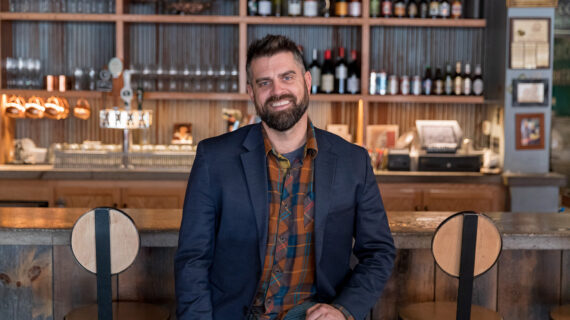
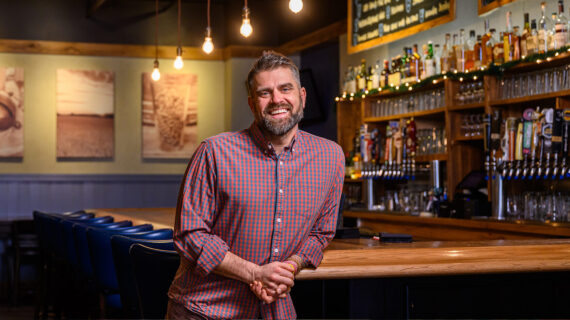
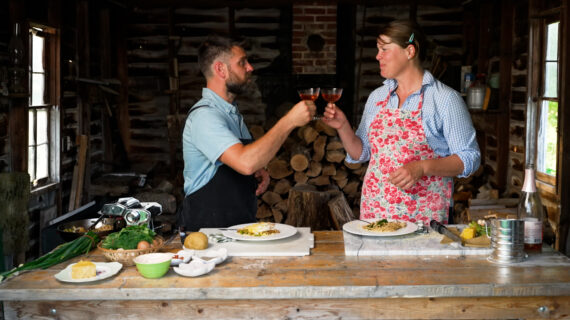
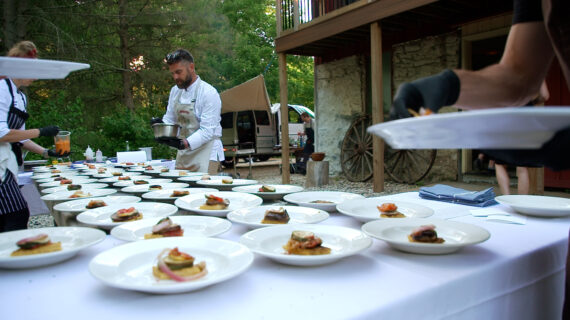
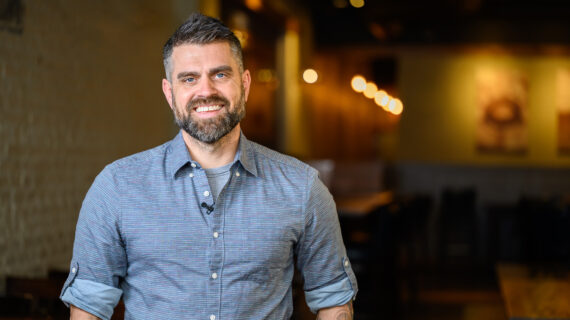
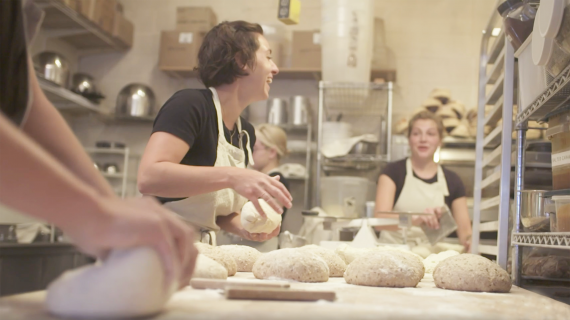
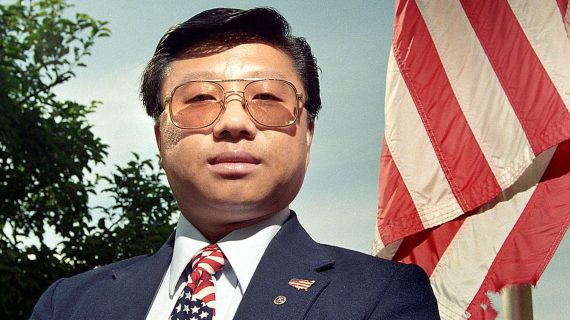

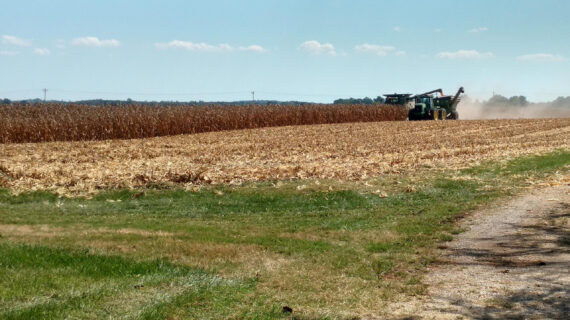

Follow Us